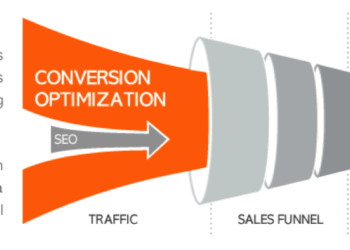Building a successful partner program isn’t just about recruiting the right partners—it’s about empowering them to succeed. That’s where partner enablement and partner training come in. Together, these two approaches ensure that your partners have the knowledge, tools, and support they need to drive results for your business.
But how do you effectively combine partner enablement and training into a cohesive strategy? And why does it matter? In this guide, we’ll break it all down—from what these terms mean to actionable steps you can take to improve your partner program.
What is partner enablement?
Partner enablement is all about providing your partners with the ongoing resources, tools, and support they need to perform at their best. Think of it as a continuous process, not a one-time event. This might include giving partners access to a centralized knowledge base, sharing up-to-date sales collateral, or hosting regular check-ins to keep them informed and motivated.
The goal of partner enablement is to make sure partners feel confident and capable in representing your brand—whether they’re closing deals, delivering services, or building customer relationships.
What is partner training?
Partner training focuses on educating your partners, typically during the early stages of your relationship. It’s designed to teach partners about your products, services, and sales processes, as well as the value they bring to customers.
Effective partner training doesn’t just stop at the “what” and “how”—it also communicates the “why.” Partners need to understand the unique selling points of your business so they can position it effectively in the market.
Why you need both partner enablement and training
While partner training lays the foundation for success, partner enablement ensures that success is sustained over time. Without training, partners might struggle to understand your product or services. Without enablement, they may lack the tools and support to apply their knowledge.
By integrating both approaches, you can:
- Accelerate onboarding: Partners can quickly learn the essentials and start contributing.
- Improve partner performance: Continuous enablement ensures partners have the resources they need to sell effectively.
- Strengthen relationships: Supporting your partners at every stage fosters trust and loyalty.
Steps to create an effective partner enablement and training program
A well-designed partner program doesn’t just happen—it requires thoughtful planning and execution. Here are the key steps to get started:
1. Define your goals and metrics
Before you start building your program, ask yourself: What do you want to achieve? Whether it’s driving partner revenue, improving retention rates, or expanding into new markets, defining clear goals will help guide your strategy.
Don’t forget to establish metrics for success, such as:
- Time-to-productivity for new partners
- Partner certification rates
- Revenue generated by partners
2. Build a central knowledge hub
Partners need a single source of truth where they can access everything from training materials to sales collateral. A centralized knowledge hub not only makes it easier for partners to find what they need but also ensures they’re always working with the most up-to-date resources.
Make sure your hub includes:
- Training videos, webinars, and guides
- Product documentation and FAQs
- Sales tools like pitch decks and case studies
3. Offer flexible training options
Not all partners learn the same way. Some may prefer live training sessions, while others might gravitate toward on-demand content. Offering a mix of training options—like interactive webinars, self-paced modules, and certification programs—ensures you’re meeting the needs of your diverse partner ecosystem.
4. Enable ongoing learning and support
Training shouldn’t stop after onboarding. To keep partners engaged and effective, provide continuous learning opportunities. This could include:
- Regular updates on new products or features
- Advanced training modules for experienced partners
- Tools like chatbots or ticketing systems to answer partner questions in real time
The more supported your partners feel, the more confident they’ll be in representing your brand.
5. Gather feedback and iterate
Your partners are your best resource for improving your program. Regularly check in to gather feedback on what’s working and what’s not. For example, you might send out surveys after training sessions or ask for input during quarterly reviews.
Use this feedback to refine your training content, enhance enablement resources, and optimize your overall program.
Best practices for partner enablement and training
To ensure your program is as effective as possible, keep these best practices in mind:
- Focus on outcomes, not just activities: It’s not enough to provide training sessions or resources—you need to measure how those efforts impact partner performance.
- Make content engaging: Use visuals, real-world examples, and interactive elements to keep partners interested.
- Keep communication open: Regular check-ins and updates can prevent partners from feeling disconnected or unsupported.
Final thoughts
Investing in partner enablement and partner training isn’t just about helping your partners succeed—it’s about building a program that grows alongside your business. By combining structured training with ongoing support, you can create a partner ecosystem that drives long-term value for everyone involved.
Whether you’re starting from scratch or looking to optimize an existing program, the key is to focus on scalability, simplicity, and continuous improvement. A strong enablement and training strategy is more than just a nice-to-have—it’s the foundation of a thriving partner network.












